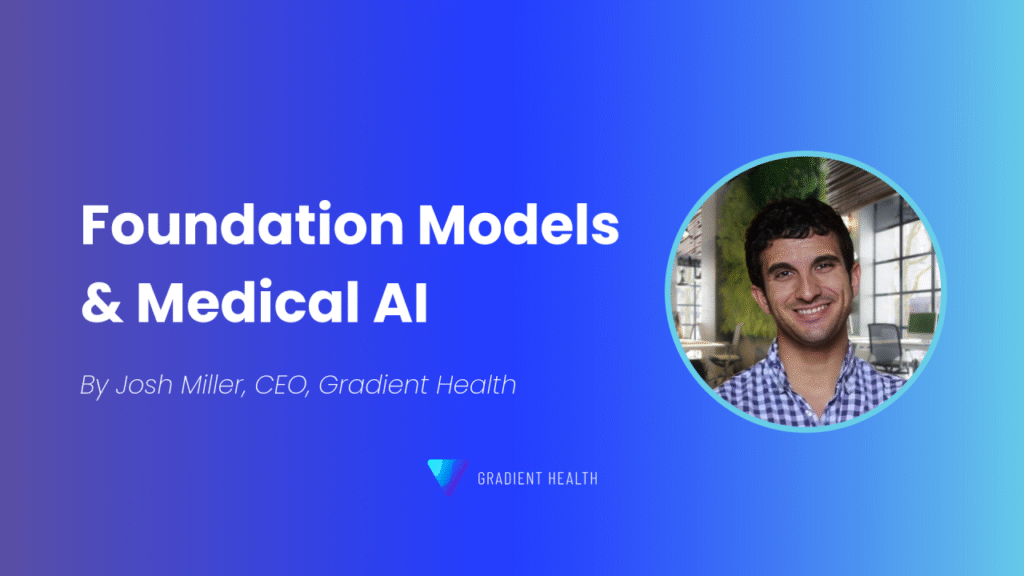Some big news in the radiology AI world last week – Aidoc got FDA clearance for their foundation model, representing the first clearance in this new class of technology. The “bigness” of this news, goes deeper than just a headline, it represents a signal about where healthcare, and regulations are going. Let’s dive in:
Wait, what is a Foundation Model?
A foundation model is a large, pre-trained AI model designed to understand patterns in massive datasets and adapt to a wide range of use cases.. In the context of medical imaging, this means the ability to perform varied tasks like finding nodules, cancers, and fractures in multiple contexts.
What’s not been working in Medical AI?
Most AI built in the space is meant to answer a single, very specific medical question. This creates a few problems:
- To have a comprehensive solution, medical providers have to purchase multiple applications, which means multiple integrations to implement, multiple contracts to manage, and multiple systems that can go down.
- No AI is provided with a holistic view of the patient, leading to incomplete information and worse decision-making.
- Context switching between systems means that medical staff are susceptible to fatigue, burnout, and distraction.
Why will Foundation Models work?
- Radiologists are multi-functional, so their AI should be as well.
- A single system means a single log in, and minimized context switching.
- A single model means a single integration, a single contract, etc.
My view on Foundation Models.
For over two years, I’ve been writing about the impact foundation models are set to have on the medical technology sector. As a data intermediary specializing in sourcing the kind of massive datasets needed to train these models, Gradient is well placed to see the level of investment and progress being made, and let me tell you, it is huge. It’s exciting to see the first models reaching regulatory maturity – and there will be many more to come.
A few parting thoughts.
Over a thousand “conventional” AI tools have already been cleared by the FDA, so seeing the first of a new breed is a genuine milestone. But regulatory clearance is only table stakes. To reach their full potential, these technologies must also earn the trust of patients and providers alike, and we’re a long way off from seeing how this will go down.
Given the importance of predicate devices in the US regulatory pathway, it will be interesting to see how the agency defines the minimum bar for future foundation models and how that, in turn, shapes innovation in the space.
To learn more about how Gradient is enabling this new era of medical AI, get in touch at gradienthealth.io


